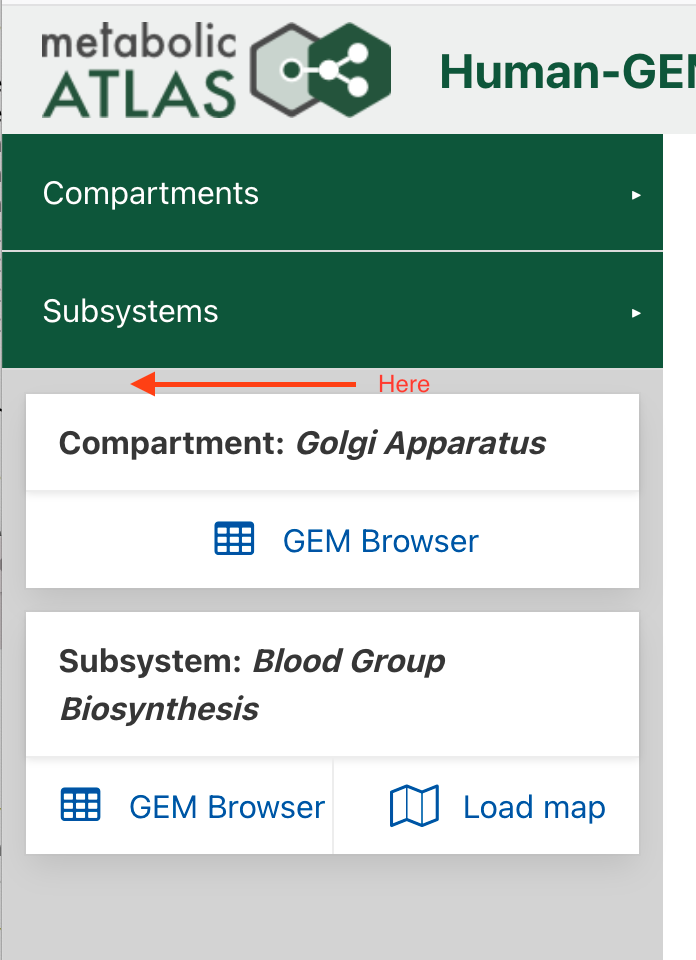Metabolic Atlas is a web platform integrating open-source genome scale metabolic models (GEMs) for easy browsing and analysis. The goal is to collect many curated GEMs, and to bring these models closer to FAIR principles. The website provides visualisations and comparisons of the GEMs, and links to resources, algorithms, other databases, and more general software applications. In short, the vision is to create a one-stop-shop for everything metabolism related. Read more about the project on the About page.
If you use Metabolic Atlas in your scientific work, please cite:
Version 3.0: Li, F., et al, 2022. GotEnzymes: an extensive database of enzyme parameter predictions. NAR, gkac831 doi:10.1093/nar/gkac831
To cite previous versions or other adjacent work, see the Citation page on the website.
If you would like to contribute to the project, for example if you have ideas for new features, discovered a bug or if you would like to improve the code base, please have a look at CONTRIBUTING.md. All ideas and contributions are highly appreciated.
If you discover any potential vulnerabilities associated with the project, please reach out to us at [email protected].
The front-end uses Vue.js, with help of Vue CLI. The backend uses ExpressJS and Neo4j as the database.
Docker and docker-compose are used to manage the dependencies of this project. Start by installing these if they are not present on the system.
If you want to try out the latest features of MetabolicAtlas, change the branch to main.
Apart from the current repository, two additional repositories are required in order to deploy Metabolic Atlas locally, they are
- data-generation: for generating neo4j database
- data-files: contains all the data necessary data (integrated models, maps, FTP repository) using Git LFS
Clone the three required repositories by
git clone https://github.com/MetabolicAtlas/MetabolicAtlas
git clone https://github.com/MetabolicAtlas/data-generation
git clone https://github.com/MetabolicAtlas/data-files && pushd data-files; git lfs pull; popd
Go to the repository data-generation and follow the instructions on how to generate the data files required by Metabolic Atlas.
In the folder MetabolicAtlas that has been cloned, add a env-local.env file based on the env-local.env.sample file:
cp env-local.env.sample env-local.envand modify this env-local.env file.
Make sure the paths for DATA_FILES_PATH and DATA_GENERATOR_PATH are correct for your setup, eg. the paths to where you have downloaded the repositories data-files and data-generation.
To load the list of helper commands run:
source proj.shRun the helper command that creates the database and builds the Docker images of the project:
build-stackFinally, start the Docker containers with
start-stackGiven successful deployment, the frontend should be accessible at: http://localhost/. If you encounter any problems try looking at the logs logs api / logs frontend.
To deploy the stack to a remote server, create another ENV file, e.g. env-dev.env, and modify it accordingly:
cp env-local.env.sample env-dev.envUse the tag of the file (dev in the previous example) as an argument to the deploy-stack command to pass the ENV file to the Docker command and the Docker compose file:
deploy-stack devTo reconstruct the database for GotEnzymes on the local (development) machine. Run the following. This should take ~10 minutes.
ma-exec pg psql -f scripts/init.sql -U postgresFor remote servers, the init script is configured to run automatically if the database has not been initialized. To reconstruct the database, delete the mounted volume for the database on the remote server (located at /var/lib/docker-volumes/pg/postgres-data) and deploy again.
-
To bootstrap the project:
build-stack -
To run the project:
start-stack -
To stop the project:
stop-stack -
To run a command inside a docker container:
ma-exec <CONTAINER_NAME> <COMMAND>. Below is a list of useful container specific commands.- Run API data validation tests:
ma-exec api yarn test - To run compartment related tests only:
ma-exec api npx jest --testNamePattern=compartments - Use prettier to format frontend (also works for
api) files:ma-exec frontend yarn format - Run eslint for frontend (also works for
api):ma-exec frontend yarn lint - Create production build and
stats.html:ma-exec frontend yarn build
- Run API data validation tests:
-
To clean the project (delete containers and volumes):
clean-stack -
To display real-time logs:
logs [container-name: frontend/api/nginx/neo4j/ftp] -
To deploy the project:
deploy-stack -
To (re-)import the Neo4j database:
import-db
When rebuilding the stack, you might have to change the ownership of the directory neo4j:
sudo chown -R <user> neo4j
Replace <user> with your user name. The ownership will be automatically reset when running the project, so you will have to repeat this step for every rebuild.



